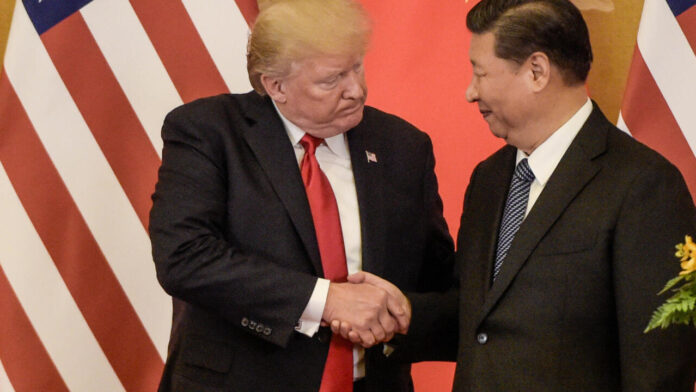Beneath a veneer of normalization, the Sino-American rivalry is reigniting. On the eve of a crucial Trump–Xi meeting in South Korea, both sides are raising the stakes through sanctions, threats, and economic pressure. The trade war is back — fiercer, more strategic, and with no room for illusions.
Trump vs. Xi: A Familiar Fire Rekindled
The U.S.-China trade war never truly ended. At best, it was put on ice—numbed by hollow pledges and performative diplomacy. Now, weeks before a decisive summit in Seoul, both superpowers are returning to form: protectionist posturing, tit-for-tat measures, and martial rhetoric tailored for domestic audiences.
Donald Trump, true to his method of calculated improvisation, responded with apparent surprise to Beijing’s decision to tighten export controls on rare earth elements — critical materials China has long used as a silent tool of influence. Behind the rhetoric lies a battle of nerves, where each side probes the other’s resilience.
Rare Earths: Beijing’s Subtle Weapon
The Trump administration wasted no time retaliating, imposing new tariffs on Chinese cooking oil and threatening a 100% duty on all Chinese imports. Predictable. What was less expected was Beijing’s surgical strategy: not banning exports outright, but controlling who gets access. A subtle, coded message to the West — your supply chains are not safe.
This “soft embargo” — coupled with targeted port tariffs and hawkish messaging from the Ministry of Commerce — signals a China now fully fluent in the language of economic pressure. The goal? To manufacture calibrated instability, enough to unsettle Washington without triggering full-scale decoupling.
Who Fired First? A Stage of Deception
The Western media, ever eager to echo Atlanticist narratives, portrays Beijing as the aggressor—reviving a conflict the U.S. allegedly sought to avoid. A convenient fiction. A glance at the timeline reveals the reality: it was Washington that reignited the confrontation, painting China once more as the enemy of American revival.
But shrewd observers see past the theater. Both sides had strategic motives to raise tensions before the October 31 summit. This isn’t about peace — it’s about bargaining from strength. The U.S.-China trade war, once again, is more spectacle than substance, a projection of resolve ahead of negotiations.
Xi Jinping’s Assertive Calculus
Xi Jinping is not walking into a trap. The upcoming Communist Party plenum from October 20–23 demands strength. Leveraging the rare earths threat fits the narrative: economic sovereignty, global centrality, and leverage over supply chains — just as Xi promised in 2017.
Unlike Trump’s erratic showmanship, Beijing plays the long game. The 2018 humiliation — when Huawei’s CFO was arrested during a summit dinner — remains a political trauma. This time, Xi arrives armed and alert.
Trump’s Theater of the Unpredictable
The Trump doctrine relies on ambiguity: harsh threats one day, calming reassurances the next. The fact that new tariffs may only kick in after the Seoul summit reveals the playbook — destabilize, pressure, then extract concessions.
Yet the strategy’s limits are showing. Markets have slumped, Europe is on edge, and global firms are accelerating supply-chain diversification. The U.S.-China trade war is no longer bilateral — it’s a global systemic risk.
A Permanent Confrontation
This latest clash isn’t a detour — it’s the logical trajectory of two incompatible powers. A revisionist China reshaping the global order, and a declining America trying to mask weakness through bluster.
The U.S.-China trade war is not merely economic — it is existential. Neither side wants peace; both want victory. But in this grand chess game, every move carries global consequences. The rest of the world would do well to take note.



